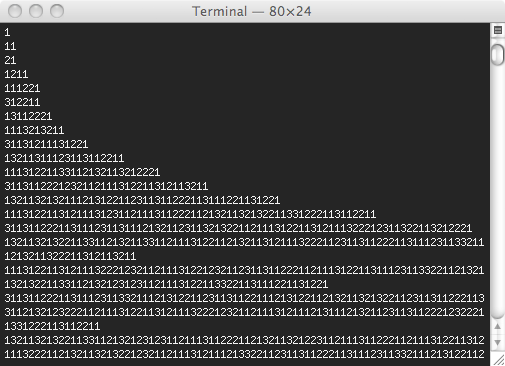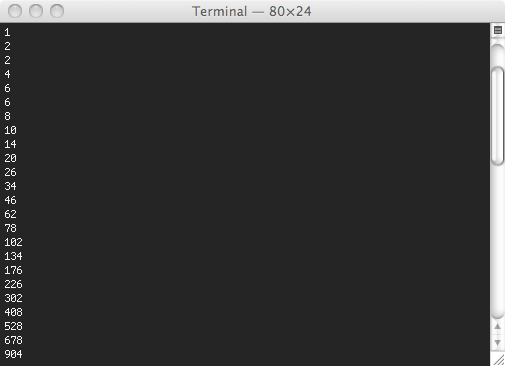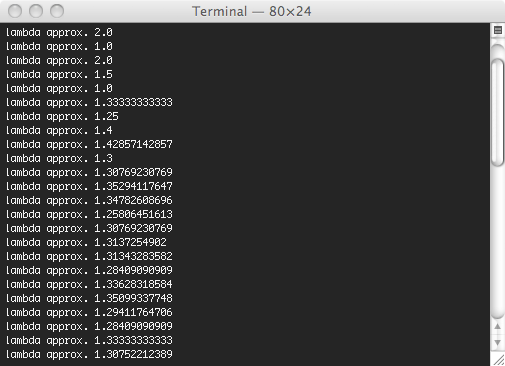Look-and-Say Sequence (#107)
An interesting nonmathematical sequence which yet has interesting mathematical properties is the Look-and-say sequence.
As every good sequence does, it starts with a 1. From there you get each next entry by looking at the previous one and saying it. The next entry will thus be “one 1”, or 11. From there, “two 1”, or 21, then “one 2; one 1”, or 1211, “one 1; one 2; two 1”, or 111221, and so on.
Generating the Sequence

The mathematical property, although, does not lie in the entry’s value, but rather in its length.
Calculating the Length of each Entry

The interesting thing about the length is that it approximately grows by 𝜆 each time.
This constant 𝜆 can be calculated by getting the real root of a degree 71 polynomial (see Nathaniel Johnston’s post for further information) or be approximated by dividing entries.
Approximating 𝜆

Source code: look-and-say-sequence.py